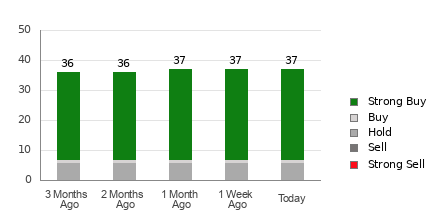Social Security can go a long way in retirement, and for many people, benefits are a lifeline. Nearly 60% of current retirees say they depend on their benefits as a major source of income. According to a 2023 poll from Gallup, an additional 29% claim it’s a minor income source. If you’re relying on Social Security in retirement, it’s wise to maximize your benefits. Everyone’s payments differ slightly, but it’s helpful to see how your benefit stacks up to the average for your age.
It’s also beneficial to compare those averages to the maximum Social Security payments based on age. Here’s how to see where you stand, as well as how to get as close as possible to the maximum benefit.

Image source: Getty Images.
Understanding the Average Social Security Benefit by Age
Your benefit amount is primarily based on three factors: your earnings history, the length of your career, and the age you begin claiming. The average retired worker collects around $1,275 per month at age 62. By age 67, the average increases to $1,845 per month, and it rises to around $1,963 per month at age 70. Your full retirement age (FRA) depends on your birth year, but falls between ages 66 and 67 for everyone. You can file as early as age 62, which will reduce your monthly payments, or delay benefits up to age 70 to receive your basic benefit amount plus a bonus each month.
| Age | Average Monthly Benefit Amount Among Retired Workers |
|---|---|
| 62 | $1,275 |
| 63 | $1,365 |
| 64 | $1,412 |
| 65 | $1,505 |
| 66 | $1,720 |
| 67 | $1,845 |
| 68 | $1,848 |
| 69 | $1,819 |
| 70 | $1,963 |
Source: Social Security Administration. Table by author.
While the average retired worker collects less than $2,000 per month regardless of age, the maximum payments are far higher. In 2024, the most you can receive is a significant $4,873 per month. However, your age will also have a dramatic impact on your maximum possible payments.
Strategies for Achieving the Maximum Possible Benefit by Age
To receive the highest possible $4,873 monthly payments, you’ll need to work for at least 35 years, delay benefits until age 70, and consistently reach the maximum taxable earnings limit. Your benefit is calculated using an average of your income over the 35 years you earned the most. Working for fewer than 35 years will result in zeros added to your average, reducing your earnings average and lowering your benefit amount.
You’ll also need to consistently reach the maximum taxable earnings limit, or wage cap. This limit is the highest income subject to Social Security taxes, and the closer you can get to it, the higher your benefit will be. Finally, your age will have a major impact on your maximum benefit. The only way to receive the highest possible payment is to wait until age 70 to file, and claiming before that will reduce your monthly checks.
| Age | Maximum Possible Monthly Social Security Benefit |
|---|---|
| 62 | $2,710 |
| 65 | $3,426 |
| 66 | $3,652 |
| 67 | $3,911 |
| 70 | $4,873 |
Source: Social Security Administration. Table by author.
Claiming early can substantially reduce your payments. Even if you meet all the other requirements, if you file as early as possible at age 62, the most you can receive is only $2,710 per month in 2024. Whether your benefit is closer to the average or the maximum payments, choosing your claiming age carefully can help you make the most of Social Security in retirement.
The $22,924 Social Security bonus most retirees completely overlook
If you’re like most Americans, you’re a few years behind on your retirement savings. But a handful of little-known “Social Security secrets” could help ensure a boost in your retirement income. For example: one easy trick could pay you as much as $22,924 more each year! Once you learn how to maximize your Social Security benefits, we think you could retire confidently with the peace of mind we’re all after. Simply click here to discover how to learn more about these strategies.
View the “Social Security secrets”
The Motley Fool has a disclosure policy.



